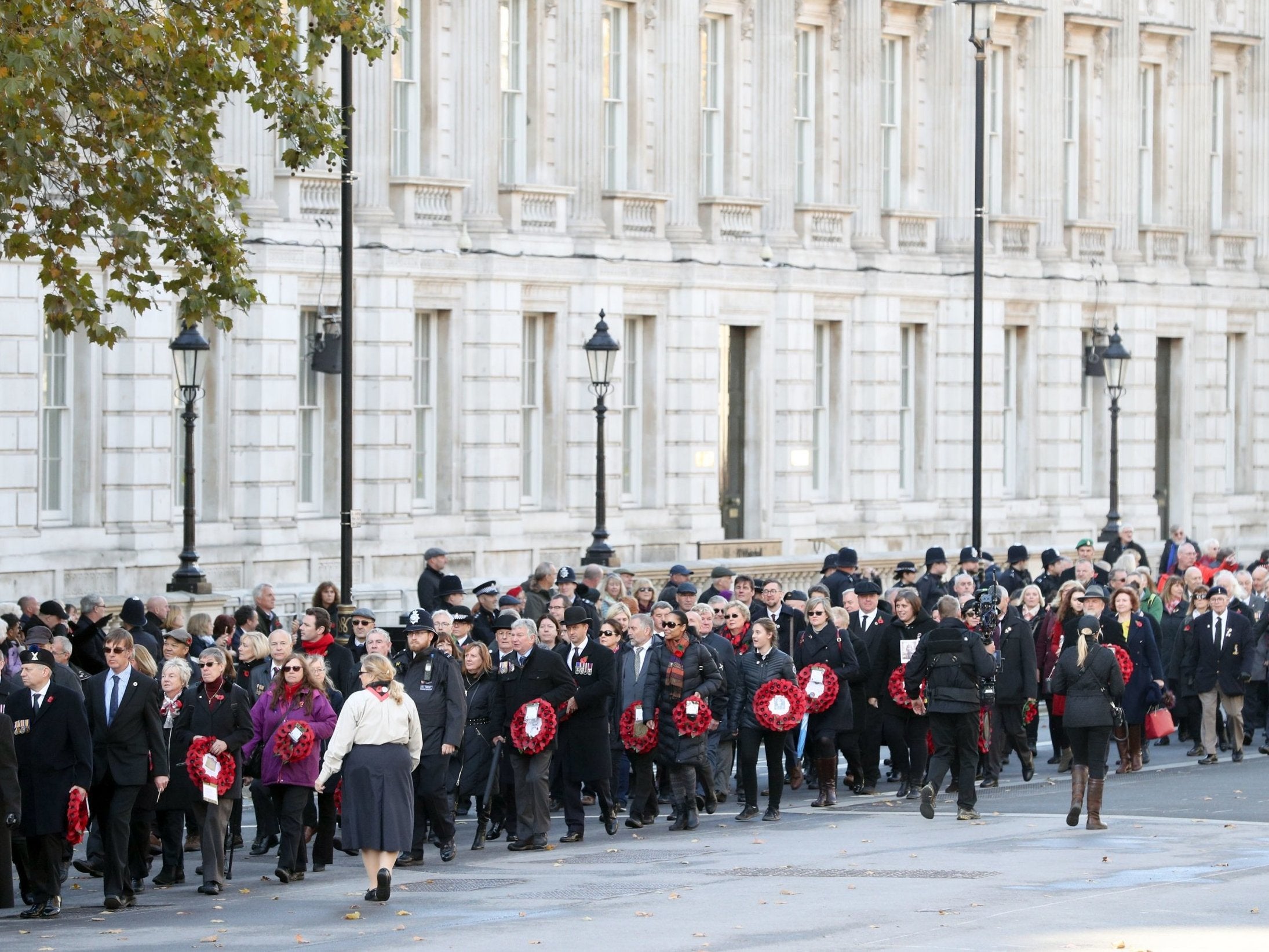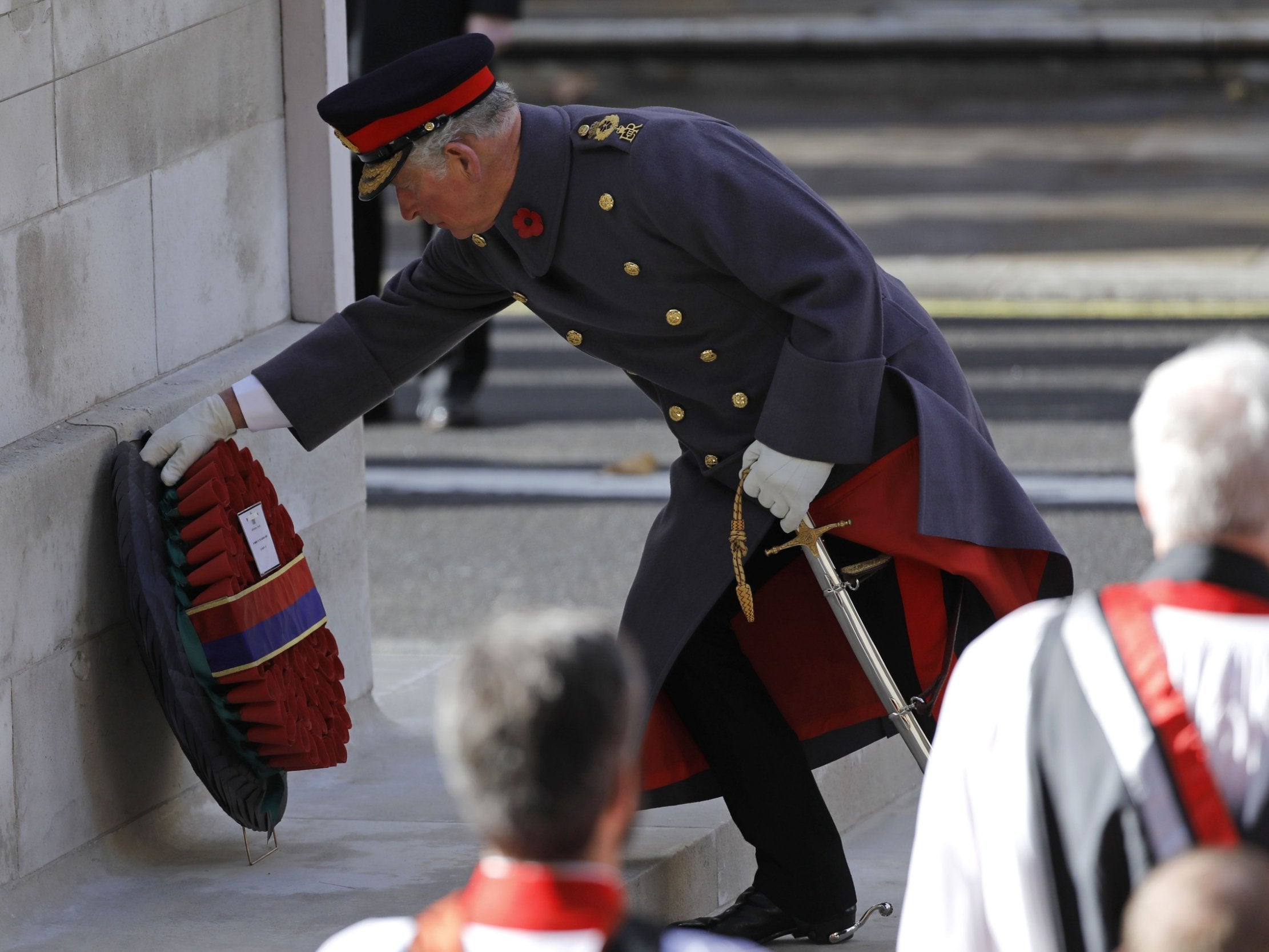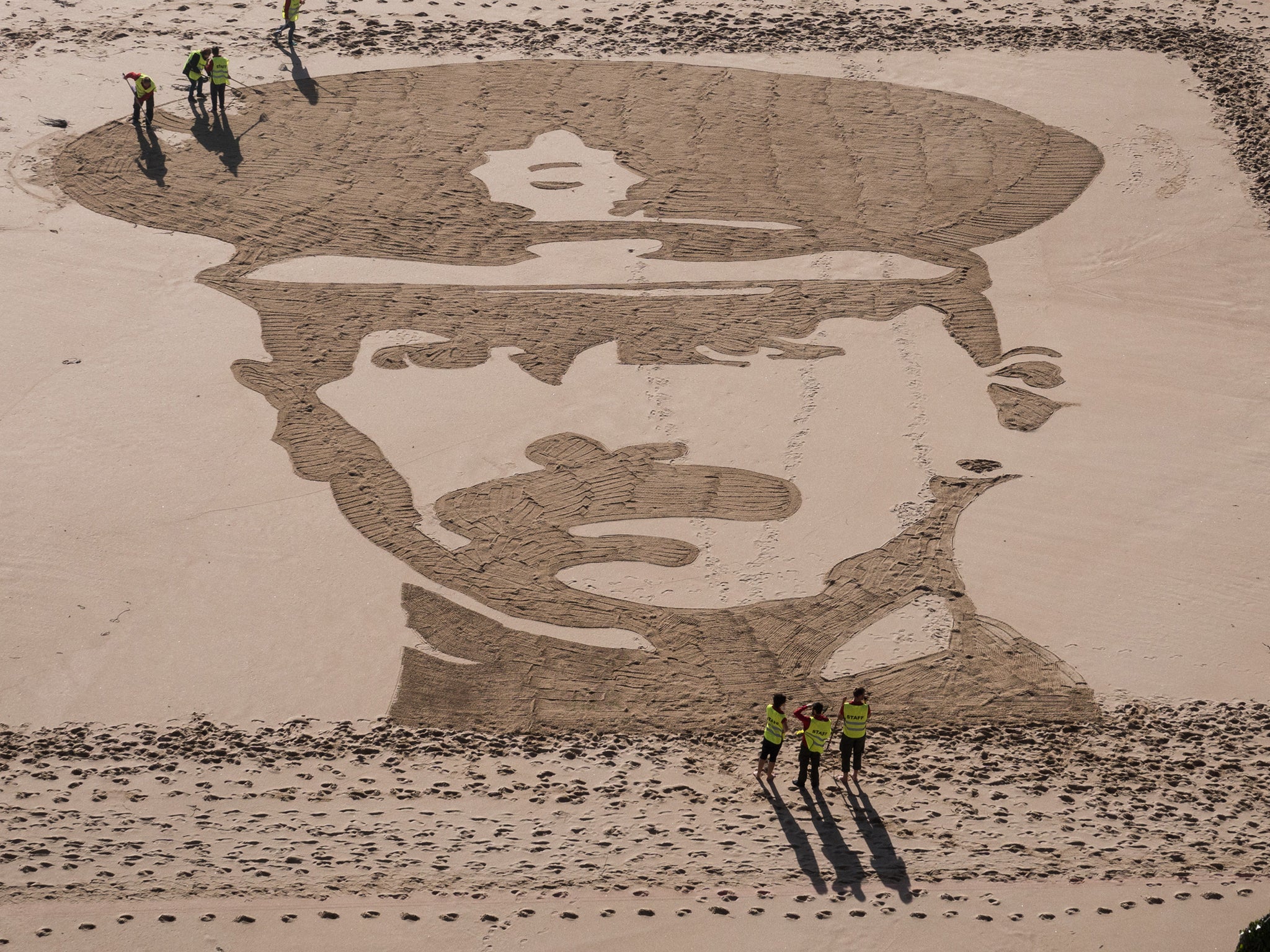Remembrance Day: Thousands take part in ‘people’s procession’ to honour war dead
Prince Charles lays wreath at the Cenotaph in place of the Queen
Your support helps us to tell the story
From reproductive rights to climate change to Big Tech, The Independent is on the ground when the story is developing. Whether it's investigating the financials of Elon Musk's pro-Trump PAC or producing our latest documentary, 'The A Word', which shines a light on the American women fighting for reproductive rights, we know how important it is to parse out the facts from the messaging.
At such a critical moment in US history, we need reporters on the ground. Your donation allows us to keep sending journalists to speak to both sides of the story.
The Independent is trusted by Americans across the entire political spectrum. And unlike many other quality news outlets, we choose not to lock Americans out of our reporting and analysis with paywalls. We believe quality journalism should be available to everyone, paid for by those who can afford it.
Your support makes all the difference.Thousands of people have marched in a “people’s procession” through central London to honour Britain’s fallen soldiers on the 100th centenary of the end of the First World War.
Around 10,000 members of the public passed the Cenotaph war monument, where senior members of the royal family, Theresa May and Jeremy Corbyn placed wreaths earlier on Sunday.
Prince Charles laid a memorial on at the foot of the Cenotaph while Queen Elizabeth II watched from a balcony.
The solemn Armistice Day ceremony, marked by two minutes of silence at 11am, was repeated in dozens of towns, cities and villages throughout Britain.
The procession of people marching from the Mall to St James Park on Sunday afternoon, chosen in a public ballot, included the descendants of many veterans.
Marion Lewis and her sister Dorothy Heslop were marching for their grandfather, Private John Waters of the 23rd Battalion Middlesex Regiment.

He received a serious head wound at the Somme in 1916 which left him missing part of his skull. Ms Lewis and Ms Heslop said it was an unspoken rule not to ask granddad about the war.
“They did not expect him to survive so they left him outside the medical tent and we think it’s the cold that probably saved him,” said Ms Heslop.
Jackie Sheridan, whose great-great uncle Oliver Davies died aged just 21 while serving as a driver for the Royal Engineers near Jerusalem, was also taking part. “It’s a very proud moment to represent my family who are descendants,” she said.
Ms Sheridan was wearing a Land Army badge that belonged to her grandmother Valda Davies, who received it a few years before she died. Wiping away tears, she said: “That was very important to her.”

In another poignant act of remembrance, portraits of soldiers who died during the conflict were etched out on beaches around the British coastline.
The homage was carried out on 32 beaches, including Blackpool, Folkestone, Colwyn Bay and the Shetland Islands.
Hundreds of people came out to express their gratitude before the likenesses of the dead were washed away by rising tidewater.

The “Pages of the Sea” project, organised by filmmaker Danny Boyle, saw artists and volunteers used rakes and stencils to make the images in the early hours of Sunday when the tide was low.
Silhouettes of soldiers from the First World War were also projected on to famous UK landmarks, while services were held at Llandaff Cathedral in Cardiff, St Anne’s Cathedral in Belfast and Glasgow Cathedral.
A senior representative of the German government took part in Britain’s Remembrance Day observances for the very first time.
German President Frank-Walter Steinmeier laid a wreath at the foot of the Cenotaph, a gesture meant to symbolise the friendship between the nations.
Thousands gathered for a national service of remembrance at the Australian War Memorial in Canberra. Large crowds also attended the Pukeahu National War Memorial Park in Wellington for New Zealand’s main remembrance ceremony.
A former Gurkha soldier created his own armistice commemoration by planting a poppy at the peak of a Himalayan mountain.
Nims Purja, 35, reached the peak of Ama Dablam in the eastern region of Nepal shortly before 11am on Sunday.

Join our commenting forum
Join thought-provoking conversations, follow other Independent readers and see their replies
Comments